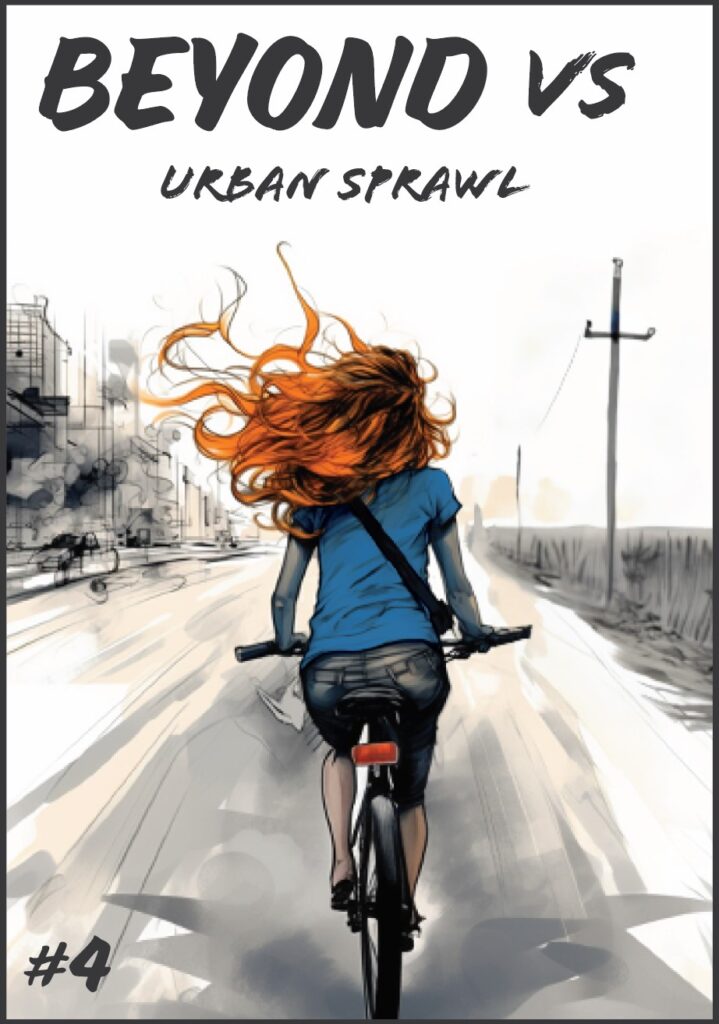Urban Sprawl: The Unseen Consequences and the Path to Sustainable Cities
Beyond VS Urban Sprawl is part 4 in the 10 part Beyond VS graphic novel series as part of Beyond Illustrated. You can click through to the full PDF or read the summary below.
A Personal Connection to Urban Expansion
Imagine the shock of learning that your family’s cherished homestead might be taken away to pave the way for a new highway. This is the reality Bey faces, and it’s a symptom of a larger issue: urban sprawl.
Understanding Urban Sprawl
Urban sprawl refers to the uncontrolled and often poorly planned expansion of cities into surrounding rural areas. It’s characterized by:
- Low-density development, such as single-family homes and shopping centers.
- Heavy reliance on automobiles due to vast distances between areas.
- The construction of new roads to connect isolated centers.
The Impacts of Sprawl
- Environmental: Increased traffic leads to poor air quality.
- Health: Pollution from traffic can cause various health issues.
- Economic: Infrastructure becomes more expensive to construct.
- Agricultural: Valuable farmland is replaced by concrete.
- Societal: Often, marginalized communities bear the brunt of urban sprawl due to wealth inequality and racial disparities.
Seeking Solutions
While urban sprawl has evolved organically over decades, there are ways to mitigate its effects:
- Zoning Reform: Mixed-use development promotes compact, walkable communities.
- Smart Growth: Principles that promote sustainable, livable, and economically vibrant communities.
- Urban Growth Boundaries: Protect natural and agricultural land by restricting where new development can occur.
- Regional Planning: Coordinated efforts can manage growth more effectively.
- Revitalization: Upgrading existing urban areas to make them more attractive and livable.
The Power of Community Involvement
Public involvement is crucial. Engineers and planners value feedback from the community, and informed citizens can significantly influence design decisions. By attending public meetings and voicing concerns, individuals can play a pivotal role in shaping the future of their cities.
Personal Choices for a Sustainable Future
Reducing personal dependence on driving, using public transportation, and supporting walkable city initiatives can make a difference. As Bey realizes, while it might be tempting to dream of perfectly planned cities, the reality is that we must work together to improve the world we have.
Conclusion
Urban sprawl is a complex issue with far-reaching consequences. However, with informed citizens, innovative solutions, and a commitment to sustainable growth, we can pave the way for more equitable and livable cities.
You can read Beyond VS Urban Sprawl and all other issues at Beyond Illustrated.



